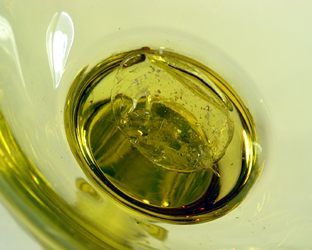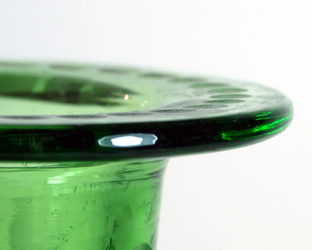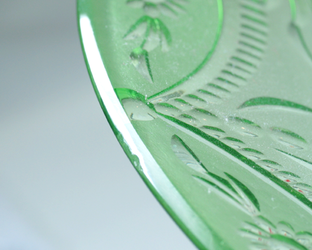Pairpoint Shapes
Most seasoned glass collectors will tell you to "Learn Your Shapes." This rule applies to Pairpoint Glass collecting as well. The shape is the first defining element that will catch your eye from across a room. With a lot of practice, the collector will gain a "sense" of design style that in one way or another appears in almost everything Pairpoint made. Coupled with specific manufacturing characteristics, which are easy to learn, it is possible, even probable, that after awhile Pairpoint identification can become a matter of instinct. We know this because many of our earlier Pairpoint acquisitions were made on instinct, later to become verified through documentation.
There are certain characteristics of manufacture that will almost always be present. We describe these characteristics in great detail in our first published book, "The Essence of Pairpoint" (Schiffer Publishing, Atglen, PA, 2001), but expect to find polished pontils and fire-polished edges. Without a polished pontil (or in some justified cases a rough unfinished pontil mark), you likely have a "wannabe" or it simply wasn't made by Pairpoint. In most cases (unless intended) a ground finished edge indicates a repair.
There are certain characteristics of manufacture that will almost always be present. We describe these characteristics in great detail in our first published book, "The Essence of Pairpoint" (Schiffer Publishing, Atglen, PA, 2001), but expect to find polished pontils and fire-polished edges. Without a polished pontil (or in some justified cases a rough unfinished pontil mark), you likely have a "wannabe" or it simply wasn't made by Pairpoint. In most cases (unless intended) a ground finished edge indicates a repair.
There were many high-production glass houses operating at the same time as Pairpoint. Like K-Mart selling copies of original designer dresses for affordable prices, these high-volume glass producers used mechanical means to replicate the designs of the high-quality expensive hand-made producers such as Steuben, Libbey, Pairpoint and others. Some did a better job than others, but all are discernibly different than the Pairpoint originals when examined more closely. As previously mentioned, these characteristics are explained in considerable detail in our book.



